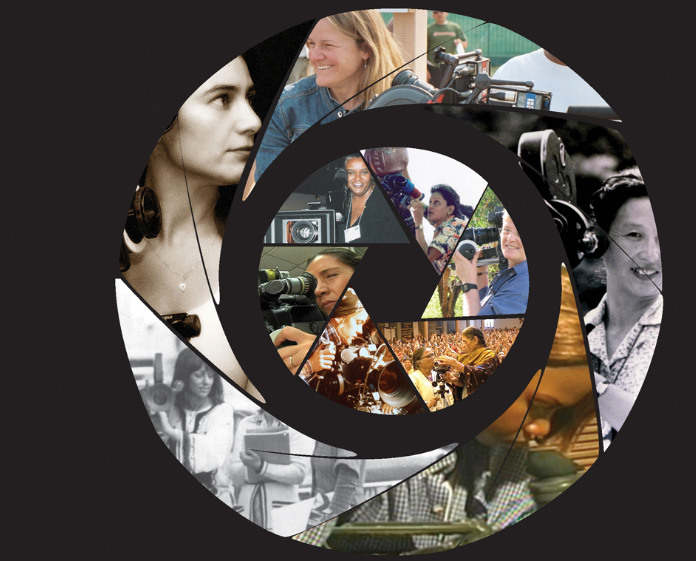An excerpt from the preface for “Shooting Women: Behind the Camera, Around the World” by Harriet Margolis, Julia Stein, and Alexis Krasilovsky. Preface by Alexis Krasilovsky.
Every couple of years, it seems, another article comes out about some very special camerawomen who have broken all the boundaries, winning top awards, climbing mountains, or fighting in war zones. With such honors and achievements, it seems like we can breathe a sigh of relief: All problems blocking equality for camerawomen have been solved. Yet Martha Lauzen’s annual reports show that the percentage of women working as DPs on the 250 top-grossing Hollywood films has varied from only 2–5 percent (“Celluloid Ceiling” reports for 2009–2015). When Sue Gibson was president of the BSC (British Society of Cinematographers), out of 100 DPs there were only three women.
We do not need to be reminded that talented women abound; every year, more and more female film students graduate from film schools with award-winning films, only to find little or no employment opportunities compared to their male counterparts. Those who work in film and television in the United States work in some of the world’s “most minority-free industries.” What will it take to change discriminatory employment patterns in the film and television industries, “making sure that all of our stories are told”? Recommendations and goodwill? No, doesn’t work. Endless statistical studies? Investigative journalism? Naming names? Better access to childcare and birth control? Governmental pressure?
The ACLU (American Civil Liberties Union) is currently collecting evidence of discrimination again women directors. As we shall see some camerawomen (Geraldine Kudaka and Jessie Maple Patton) have successfully sued (and Heather MacKenzie successfully threatened to sue) to end discriminatory practices. However, on 28 February 2011, the US Department of Labor turned down an appeal against discriminatory practices in the IA 600 election on the grounds that without Local 600-provided statistics on race, gender, and age discrimination — which the union refused to collect — there is no case. Yet the US House of Representatives passed legislation entitled “Fulfilling the potential of women in academic science and engineering,” which would require “the White House science adviser to oversee regular workshops to enhance gender equity […] to be attended by researchers who receive federal money and by the heads of science and engineering departments at universities.”
Since goodwill and raw talent are rarely enough, what else might work to combat sex discrimination? More women’s film festivals? Cable television channels focusing on women’s visions? Class action suits to withhold FCC license renewals until discrimination ends? Women’s visions going viral on YouTube? Australian actress Cate Blanchett appealing to the American Academy of Motion Picture Arts and Sciences for change while accepting her Oscar in 2014?
I’m crying out to the international community to understand the enormous challenges that camerawomen have faced around the globe, making strides in an unequal industry. This book exists to celebrate their talents and achievements and to empower more women in following their own visions, wherever they are in the world.
Alexis Krasilovsky, Prof.; Dept. of Cinema & TV Arts, Cal. State U. Northridge Writer/Director, “Let Them Eat Cake,” Co-Author “Women Behind the Camera.” “Shooting Women” (Intellect Press: London, Fall 2015)







